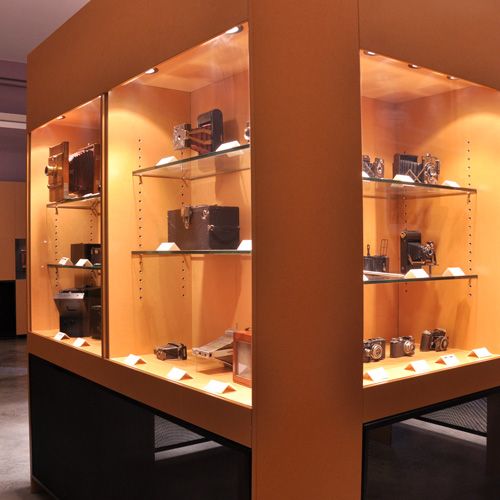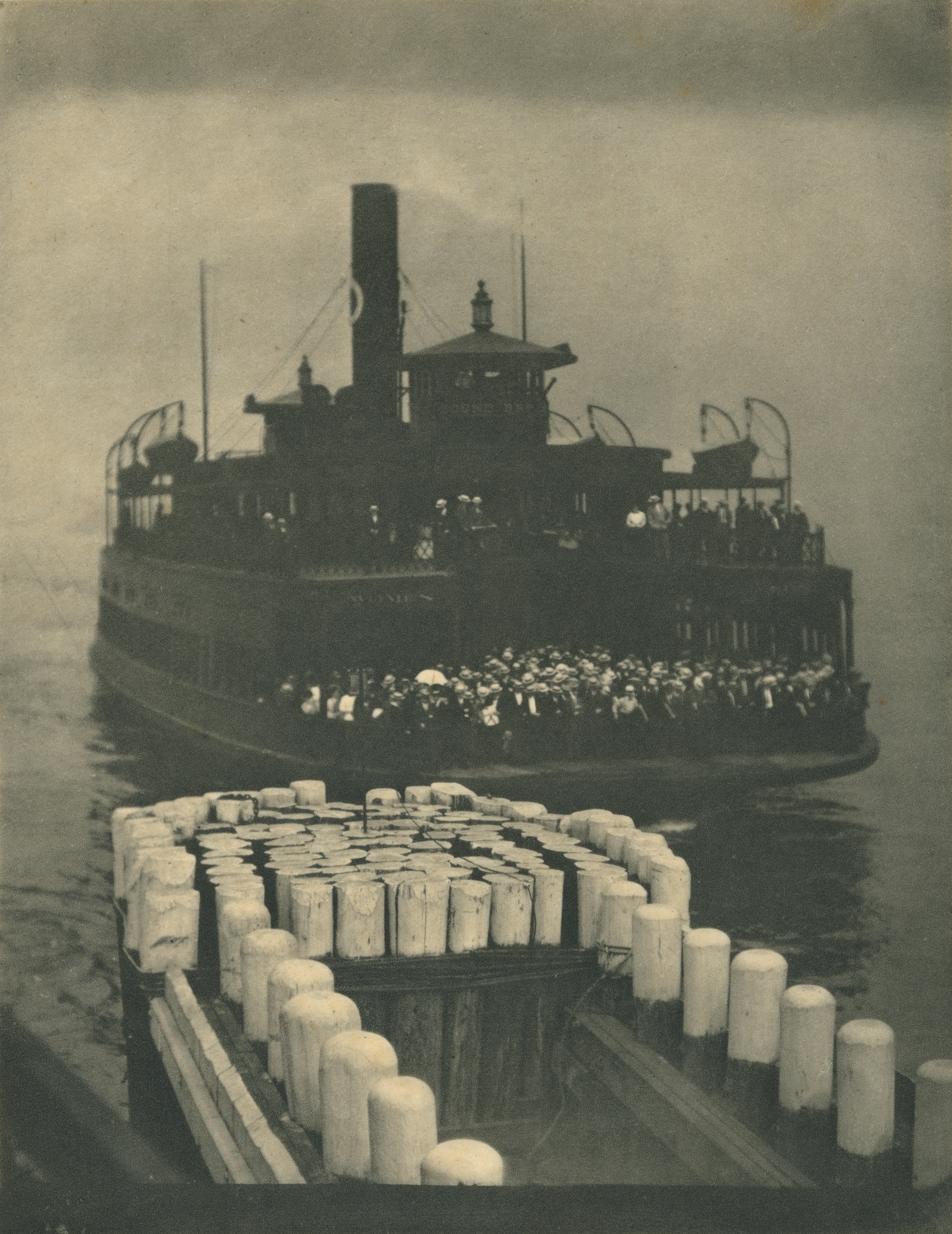A journey through the permanent collection, covering the history of photography from the pioneers up to contemporary creativity, takes in nearly 800 photographs. The creative, documentary and historical aspects exist side by side to sketch as broad a panorama as possible of both Belgian and international, historical and contemporary photography. The photographic journey is structured along two separate axes. In the former neo-Gothic Carmel, the display is chronological to show photography from the first 19th-century daguerreotypes up to the seventies. As for the new wing, it proposes a thematic approach to photography making it possible to address and crisscross the different periods around a same theme. Its wide spaces, in particular, mean that it offers the opportunity to exhibit the large sizes of contemporary creativity but also the many directions that photography would take at the dawn of the eighties.
The Museum’s camera collection reflects the history of photographic practice and its technique. Its cameras include those used for daguerreotypes, together with folding cameras, Polaroids, twin lenses, field and studio cameras, reflex cameras, disposable cameras and lastly, in recent years, digital cameras. If most of the cameras in the collection date from the 1940s to 1980s, digital photography is still under-represented in the collection as a whole.
The collection has become richer over time but two major contributions should be emphasised: the R.R. Belot collection, on loan from the City of Charleroi, and its 600 or so cameras to which another 60 will be added, as a gift from the Town of Soignies. In addition to the latter exhibits, the collection has grown larger with gifts from private individuals and one-off purchases.
Some of the outstanding museum pieces :
- Magic Photoret, United States, 1893
Watch camera fitted with a meniscus lens mounted on a unique rotator shutter. It was capable of taking six shots ½ x ½ inch (12mm) in size on round sheet film 1¾ inches (45mm) in diameter. - Jumelle Photographique Carpentier, France, 1892.
This camera was called a jumelle camera. Jumelle means ‘twin’ in French, and by extension ‘binocular’ since it has two lenses. The term refers to the shape of the camera, tapered to resemble a truncated pyramid. One of the lenses serves the viewfinder and the other is for taking photos. - Polaroid Land Corporation, Model 95, United States, 1948.
This camera is the first model in a long series; it bears the name of its inventor: the American Edwin Land. It is the first of Land’s instant picture cameras. It could only produce a black and white photo until 1963 when Land developed a colour system. The film for taking the photo is composed of a paper negative, a sac containing developer and fixer and a roll of positive paper. - Rolleiflex Automat, Franke & Heidecke, Germany, 1935.
The Rolleiflex Standard by Franke & Heidecke uses a 120-mm film for twelve 6 x 6 cm square format photos. This camera played a considerable part in the history of photography. A major appeal of these cameras is the quality of their optics and the fact that they are solidly built. They were mainly used from 1930 to 1955 by press reporters and experienced enthusiasts. Their use was going to decline when 24x36 mm film appeared. The camera has two lenses: one is used in the viewfinder system and one for taking pictures. The latter combine to obtain simultaneous focusing. - Leica E, Germany, 1932.
Oskar Barnack was the German who completed the prototype of the early device that would become the still camera launched in 1925 and was produced to take the format of the 35 mm film: the Leica A. The Leica E is a development of this model.

The Museum’s collection numbers many photographic archives referred to as “holdings”. The latter correspond to a homogeneous group composed according to either their author or their type. These holdings provide coherent examples and the study of them sheds concrete light on some photographic practices.
Examples of holdings in our collection :
The collection of albums
The Museum’s collection contains about 350 albums, composed, over the years, of targeted purchases and gifts from anonymous donors or private individuals. With the exception of some commercial albums, family albums are particularly well represented. Such albums appeared in the second half of the 19th century. The album served a social function and was truly a showcase, and sometimes a luxurious one, displaying a willingness to put on a show in the presence of a passing visitor. Portraits were collected and inserted into albums intended for that purpose, referred to as carte de visite and cabinet card albums. As a result of the development of amateur photography at the turn of the 19th and 20th centuries (Kodak generation), the album was no longer mainly a means to reflect social status and became more personal and intimate. Family, travel or landscape photographs took over from studio portraits. Completed or recomposed over the course of time, these albums sometimes cover several generations over a century of time. They give visibility to the family memory and accompany the expansion of the Museum’s collection in the area of vernacular photography.

Photographic album from the collection of the Museum of Photography
Artwork of the Month

Cette photographie de bateau, manœuvrant à proximité d’un quai, est prise à un instant charnière de la vie et de la pratique artistique de son auteur, Alfred Stieglitz. Cet Américain, né de deux parents d’origine allemande, grandit dans le New Jersey et à New York, où sa famille s’installe dans un immeuble situé à côté du futur Central Park. Autour de ses 16 ans, son père décide de retourner en Europe.
More info









